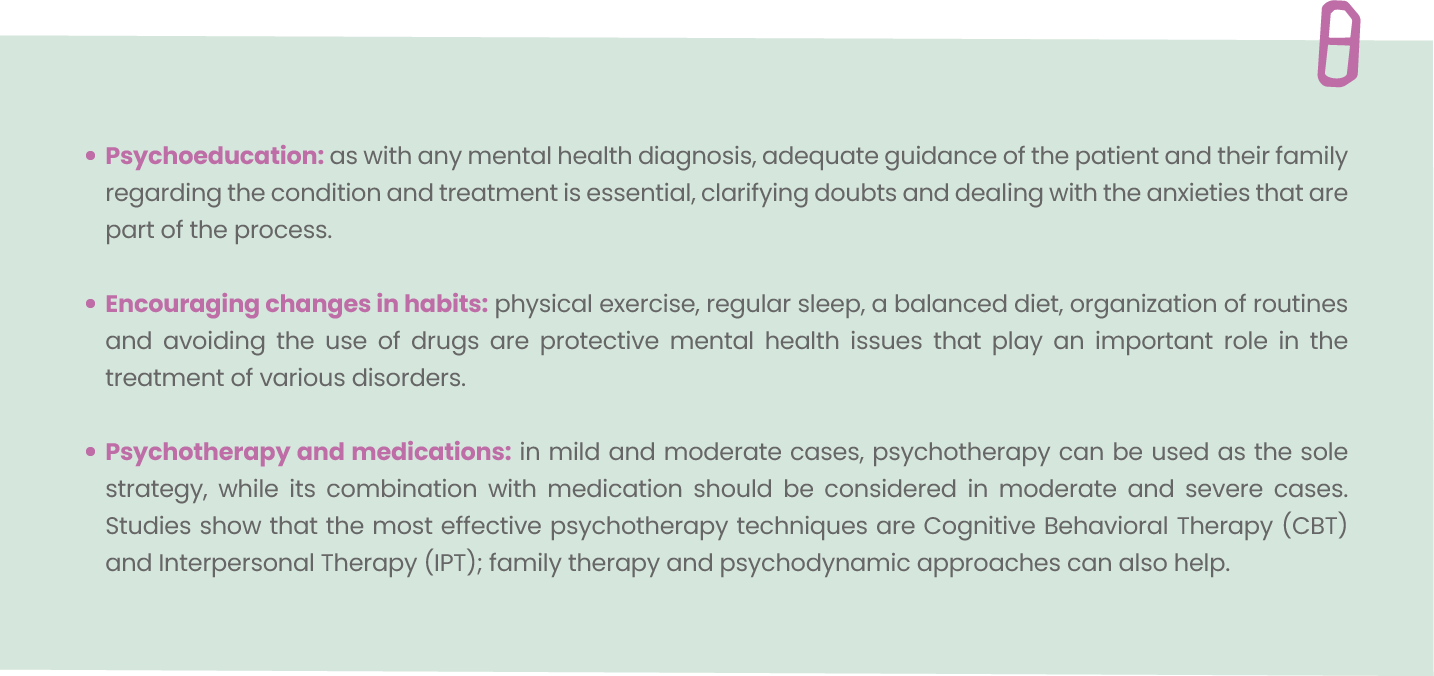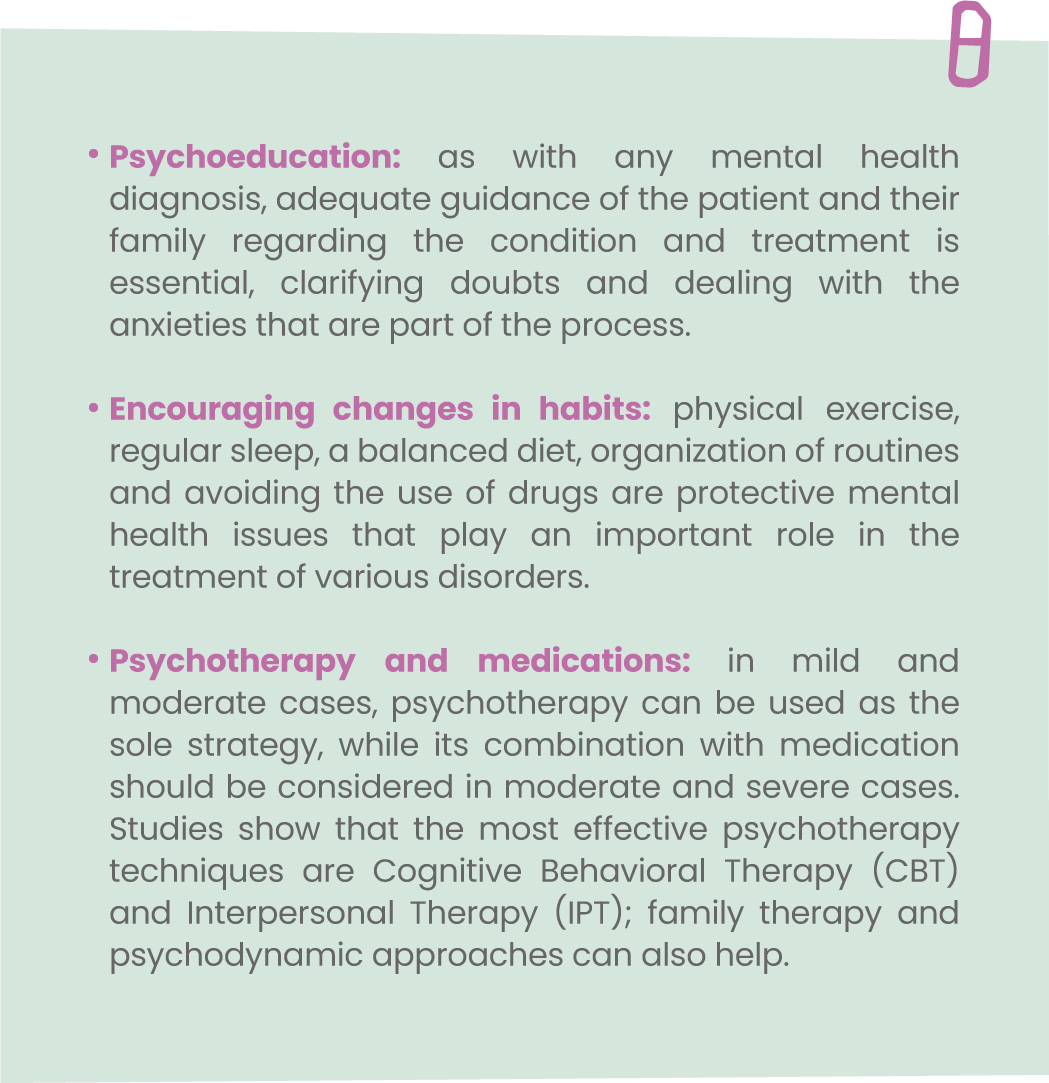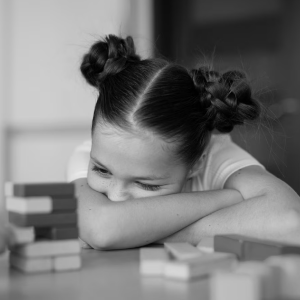
Among the various topics related to mental health, depression is one of the best known. The WHO estimates that depressive disorder affects more than 300 million people worldwide. Its symptoms can appear any time in life and, without proper treatment, tend to be recurrent.
Society in general has an idea of what depression is, but it is essential to clearly conceptualize this disease so that we can confront it more assertively. It is a mental disorder characterized by a persistent depressed mood and loss of interest in daily activities.
It is very common for people to confuse sadness with depression, making it difficult to get help. “Sadness, by definition, is an emotion and every emotion is fleeting, i.e., it tends to disappear when we take care of the symptoms and address what is happening in our lives. In depression, symptoms do not go away with time.” – explains psychologist and specialist Ana Carolina D’Agostini of the Instituto Ame Sua Mente.
“In depression, the emotional and psychological consequences are accompanied by physical and cognitive changes. To qualify as depression, the symptoms must have significant intensity, duration and impairment to the person’s life.” – concludes Ana Carolina.
What are the signs and symptoms of depression?
Many people who live with the disorder say that they no longer have pleasant feelings when carrying out daily activities and, sometimes, this loss of interest appears to be associated with a feeling of tiredness or fatigue. Symptoms usually occur most days for at least two weeks, causing disruption to daily life, whether in the social, personal or academic sphere.
Check out the other characteristics of depression:
- persistent sadness;
- loss of interest in activities previously considered pleasurable;
- changes in appetite leading to weight loss or gain;
- sleep changes;
- feeling of fatigue and lack of energy;
- decreased concentration;
- restlessness or slowness;
- guilt;
- hopelessness;
- feeling of uselessness;
- thoughts about death.
It is important to note that not all of the symptoms mentioned need to be present to diagnose the illness. “Every person who is struggling with depression has a specific experience related to the symptoms. What is common in people with depression is a change in patterns of behavior, thoughts and feelings. A depressed mood is a recurrent feature – a feeling of sadness and worthlessness.” – describes Ana Carolina D’Agostini.
The way depression is expressed can be very different depending on age. Instead of being sad, we can find irritable teenagers, as well as physical complaints, changes in sleep and appetite and high sensitivity to social rejection. Children may become more negative and exhibit a low tolerance for frustration, behaviors that can lead to fights and outbursts.
A warning sign is when we can observe such changes in behavior in more than one living space, as for example, at home and at school.
What are the causes and risk factors for depression?
Like other mental disorders, the cause of depression is multifactorial. Risk factors are usually cumulative, i.e., the risk increases as more factors build up. They can be grouped into:
Genetic factors: the effect of genes on brain development and function. Therefore, if close relatives such as parents and grandparents have already suffered from depression, the likelihood of developing the condition is greater.
Environmental factors: the effects of external stimuli on the brain, such as infections, poor nutrition, exposure to stressful events and trauma, the family context and parenting styles (attitudes and strategies that parents use in raising their children), lack of a support network (family, friends and school), isolation, and communication problems. Other environmental factors that directly impact mental health are stress, bullying, heavy use of social media, drug use and racism. It is important to note that the younger the child, the greater the influence of the environment.
What is the prevalence of depression?
Studies show that depression is less common in childhood than in adolescence. Approximately 1% to 2% of children experience depression. Although less frequent, it causes suffering and its symptoms tend to gradually worsen.
In adolescence, depression becomes much more prevalent, affecting around 4% to 8% of adolescents, and is twice as common in young women.
When we consider the entire world population, this measure of people who live with depressive disorder is 4%.
What are the risks and consequences of depression?
Depression can develop gradually and with early onset. The sooner a person seeks help and receives appropriate treatment, the greater the likelihood of recovery.
On the other hand, the longer the symptoms persist and intensify, the greater the likelihood that depression will become a chronic condition, alternating between periods of improvement and worsening of symptoms.
When left untreated, depression leads to poor academic or professional performance, health problems, family and social dysfunction, and low self-esteem.
It is not uncommon for other mental disorders to occur alongside depression, such as ADHD, which can make diagnosis more complex. Furthermore, it is important to know that depression is one of the mental disorders most associated with a greater risk of self-harm and suicidal behavior. Treating depressive disorder is the best preventive measure.
What are the treatments for depression?
Is there a cure for depression? The treatment of depression encompasses several approaches. The objective is to develop and recover skills to resume activities and reduce the likelihood of relapses. Basic strategies are the first step in treatment and can be applied to all mental disorders.


It is necessary to talk about depression and mental health
Depression is a relevant disease in Brazil and around the world, and is also the main reason for disabilities and absence from work. The stigma surrounding the issue, as well as self-stigma – when the person feels guilty, diminished or ashamed due to changes in their feelings and behaviors – prevents people from seeking help. That’s why it is so important to talk about mental health to create a new culture in which everyone can take care of themselves and reach their potential. Knowledge is the best weapon against prejudice!
The vast majority of mental disorders begin during childhood and adolescence: 75% of mental disorders start before the age of 24 and 50% by the age of 14. It is estimated that 80% of these cases are not treated, mainly due to lack of information and the stigma surrounding the issue. To change this reality, it is very important to observe these data and expand knowledge.
“Caring for ourselves is caring for our mind. The earlier we start, the better!”










